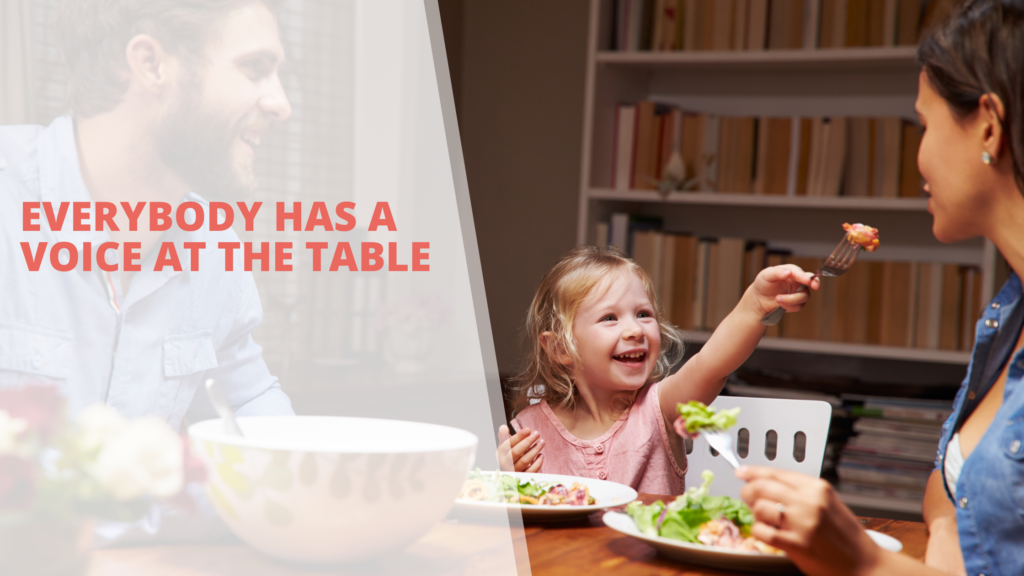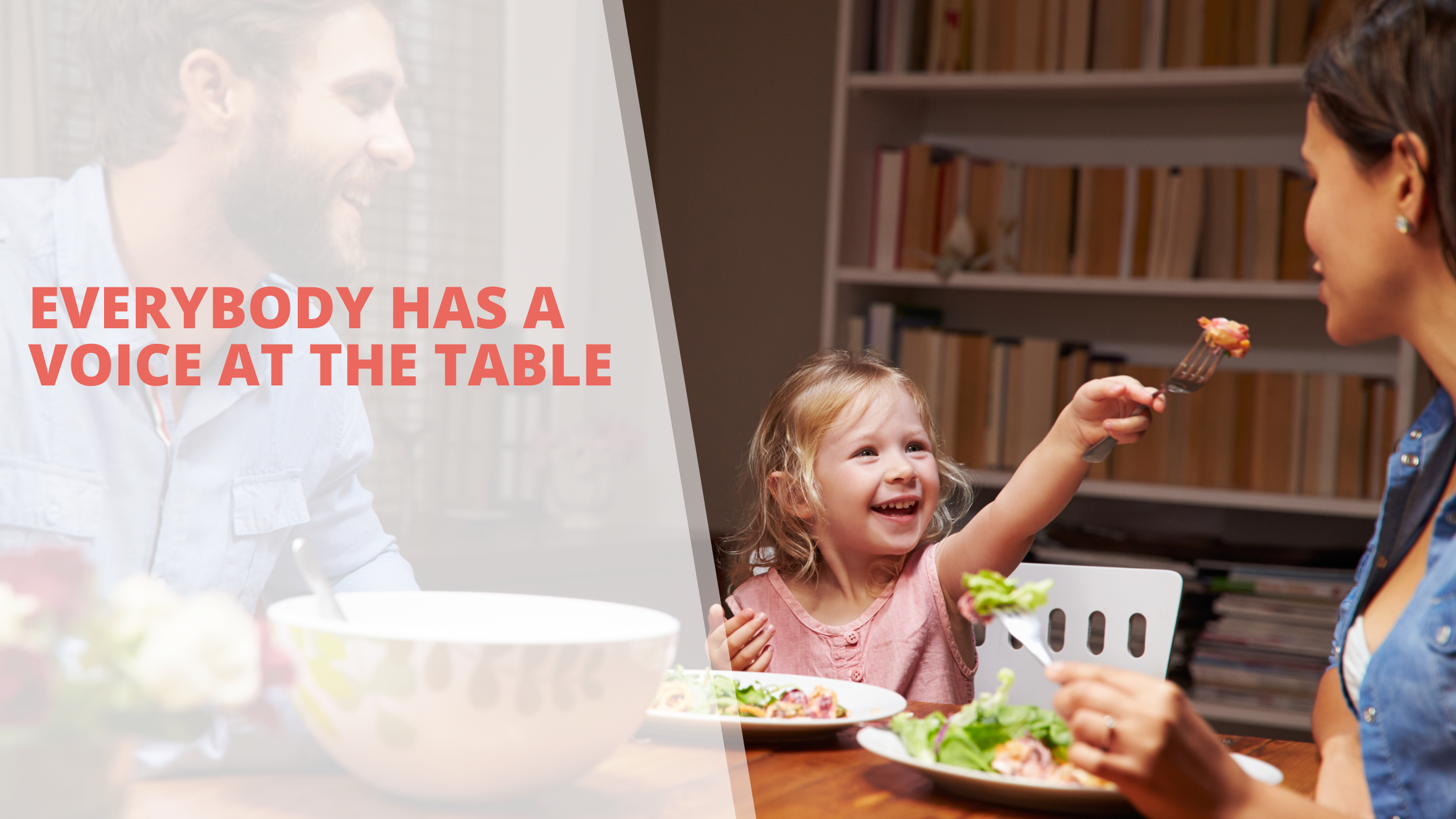
“Everybody has a voice at the table” is a saying that our original team resonated with when we established the Table Talk Project, but there is some real history behind why this is so important.
When I was young, I didn’t have the best dinner table experience. Each night, I would sit down at the end of the table near the back wall. My mum would serve the meal, and we would all sit in silence as we ate. There was never any discussion, and I don’t remember anyone asking me about my day—my highs, lows, or in-betweens. All I recall is my plate of boiled veggies, either mashed or solid, which made me sick just thinking about them. Though my mum lovingly prepared them, I hated vegetables and always waited until the last minute to eat them. The thought of eating them still makes me dry heave. When it came to actually eating, as soon as the vegetables hit my lips, I made weird faces and took forever to finish. Every night, my dad would threaten me with punishment if I didn’t eat them. I eventually did, but I HATED IT! YUUUUKKKK.
The only fun dinner time I can remember was when I decided to push my brother’s face into a bowl of pasta. As he brought his face back up, covered in tomato-based Bolognese sauce, my mum laughed—until my dad got angry.
So there you have it: my experience at the dinner table. Not the greatest, not memorable, and not something I want for my kids or anyone else’s kids.
My ideal is that as we sit down, we engage in great, real conversation where everyone has a voice and is listened to intently. That we laugh, that we experience other emotions, and that no conversation is off-limits.
I wonder if you would describe that everyone has a voice at your table? What do you need to do to create that environment?
I believe that the Table Talk Project provides the space to really create the positive experiences and memories that every child deserves.
Why Everyone’s Voice Matters
1. Fostering Inclusivity
Allowing everyone to have a voice at the table fosters an environment of inclusivity. It signals to each person that their thoughts, feelings, and opinions are valued. This inclusivity helps build a sense of belonging, which is crucial for developing self-esteem and mutual respect.
2. Encouraging Open Communication
Open communication is the cornerstone of healthy relationships. When everyone feels comfortable sharing their thoughts, it encourages transparency and honesty. This is particularly important in family settings, where open dialogue can help resolve conflicts and build stronger bonds.
3. Promoting Emotional Well-being
When people are given the chance to express themselves, it promotes emotional well-being. Being heard and understood can significantly reduce feelings of loneliness and isolation. It also helps in recognizing and addressing any emotional or mental health issues early on.
4. Enhancing Problem-solving Skills
A table where everyone can voice their opinions becomes a hub for collaborative problem-solving. Different perspectives bring diverse solutions to the table, fostering creativity and critical thinking. This is especially beneficial in teaching children how to navigate challenges and think independently.
5. Building Empathy
Listening to others’ experiences and viewpoints builds empathy. It helps individuals understand and appreciate the differences and similarities in each other’s experiences. This understanding is fundamental in creating a compassionate and supportive community.
Creating an Environment Where Everyone Has a Voice
1. Set Clear Intentions
Make it clear that the table is a space for open dialogue. Encourage everyone to share their thoughts and ensure that each person knows their voice is valued.
2. Practice Active Listening
Active listening means truly focusing on the speaker, showing interest through body language, and responding thoughtfully. It’s about making the speaker feel heard and understood.
3. Encourage Respectful Discourse
Ensure that conversations are respectful, even when opinions differ. Set ground rules if necessary, such as no interrupting and no derogatory remarks.
4. Model the Behavior
As a parent or leader, model the behavior you want to see. Share your own experiences and thoughts openly and encourage others to do the same.
5. Make It Routine
Incorporate open dialogue into your daily routine. Regular family meals, dedicated discussion times using The Table Talk Project, Back at The Table Web App can provide structured opportunities for everyone to share.
The Table Talk Project is designed to help families and communities create these positive experiences. By fostering an environment where every voice is heard, we can build stronger, more empathetic, and connected families and communities. Everyone deserves a seat at the table and a chance to be heard.

